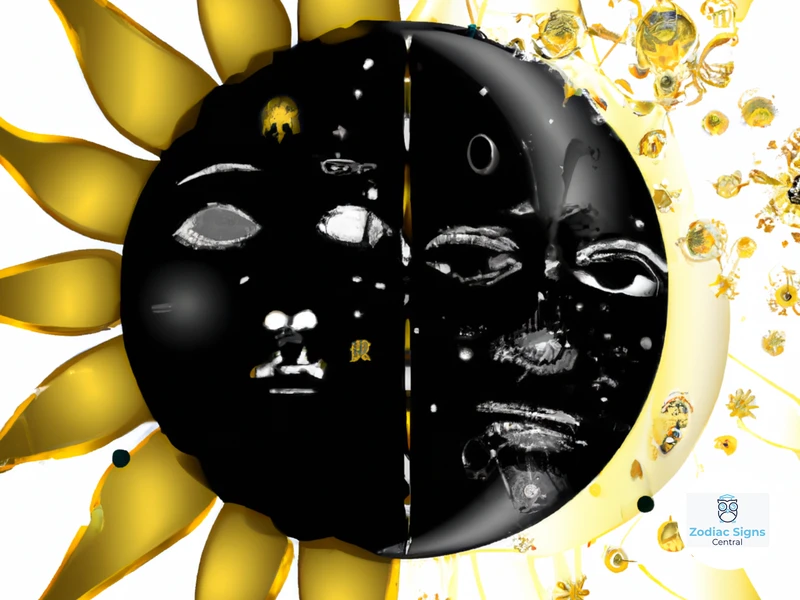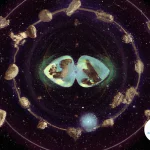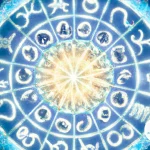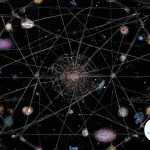The ancient origins of planetary symbols in astrology have long fascinated scholars and enthusiasts alike. Delving into the rich history of astrology, we will explore how these symbols came to be, tracing their roots back to ancient Mesopotamia, Egyptian cosmology, and Hellenistic astrology. We will discover the influence of these civilizations on the development of astrological symbols and how they evolved over time. From the merging of different cultural elements to the impact of Christianity and alchemical influences, we will unravel the intricate tapestry of symbolism in medieval and Renaissance astrology. Finally, we will examine the contemporary significance and interpretation of planetary symbols in modern astrology. Join us on this journey of celestial exploration as we uncover the fascinating origins and meanings behind these enigmatic symbols.
Ancient Mesopotamian Influence

The ancient Mesopotamians, known for their advanced civilization and contributions to various fields of knowledge, had a significant influence on the development of astrological symbols. They believed that the movements and positions of celestial bodies held deep meaning and were intricately linked to the course of human events. The Mesopotamians used cuneiform script, a system of wedge-shaped characters, to record astronomical observations and their interpretations. As part of their astrological practices, they assigned specific symbols to represent the planets and other celestial entities. These symbols were often inspired by the physical characteristics of the celestial bodies, such as the crescent shape for the Moon and the circle with a dot in the center for the Sun. + These early Mesopotamian symbols laid the foundation for the planetary symbols that are still used today in astrology.
Development of Astrological Symbols
The development of astrological symbols can be traced back to the ancient Mesopotamians. These early civilizations assigned specific symbols to represent the celestial bodies based on their observations and interpretations. Over time, these symbols evolved and became more refined. The Mesopotamians used cuneiform script, a system of wedge-shaped characters, to record their astronomical knowledge, including the symbols they used for the planets. One of the notable symbols that emerged during this period is the symbol for Saturn, which resembles a scythe or sickle. This symbol is believed to represent the agricultural and cyclical nature of Saturn in astrology. Similarly, the symbol for Jupiter, a cross with a crescent on top, is thought to symbolize the expansive and benevolent nature attributed to the planet. These early astrological symbols were the building blocks for future civilizations and their interpretations of the celestial forces. + They laid the groundwork for the continued development and refinement of astrological symbolism throughout history.
Symbology of the Sun and Moon
The symbology of the Sun and Moon in astrology has its roots in the ancient Mesopotamian civilizations. The Sun, being the most prominent celestial body, represented power, vitality, and life. Its symbol, a circle with a dot at the center, reflects the Sun’s radiant energy and ability to illuminate the world. In contrast, the Moon symbolized femininity, emotions, and the subconscious mind. The crescent shape of the Moon symbol often depicted the monthly lunar phases, signifying change and cycles. The ancient Mesopotamians believed that the Sun and Moon played integral roles in shaping human destiny, influencing everything from personality traits to life events. Today, the symbols for the Sun and Moon are universally recognized in astrology and are key components in understanding a person’s astrological chart and horoscope. + The Sun represents the core essence of an individual’s personality, while the Moon signifies their emotional nature and instinctual reactions. Understanding the symbology of the Sun and Moon is fundamental to unraveling the complexities of astrological interpretations and guiding individuals on their spiritual journey.
Egyptian Cosmology and Astrology
In Egyptian cosmology and astrology, the sky held immense spiritual significance. The Egyptians believed that the celestial bodies were not only reflective of the gods and goddesses, but also directly impacted human lives. The planets were seen as manifestations of these deities, and as such, they played a pivotal role in Egyptian astrology. Each planet was associated with a specific god or goddess and possessed its own unique symbolism. For example, Ra, the sun god, was linked to the Sun, while Thoth, the god of wisdom, was connected to Mercury. – The Egyptians represented these planets using various symbols that were often derived from hieroglyphs associated with the corresponding deity. The circle with a dot in the center, symbolizing the Sun, is reminiscent of the solar disk that represented Ra. Similarly, the crescent shape for the Moon reflects the depictions of various lunar deities in Egyptian mythology. It is fascinating to see how the Egyptian cosmological beliefs and their reverence for gods and goddesses influenced the development and symbolism of the planetary symbols in astrology.
Connection to Gods and Goddesses
In ancient Egyptian cosmology and astrology, there was a strong connection between the planetary symbols and the gods and goddesses worshipped by the Egyptians. Each planet was associated with a specific deity, and their symbols were believed to represent the divine energies and influences associated with those celestial bodies. For example, the symbol of the Sun, a circle with a dot in the center, was associated with the god Ra or Amun-Ra, the supreme solar deity in Egyptian mythology. The symbol of the Moon, a crescent shape, was associated with the goddess Isis, who was closely tied to the lunar cycles and magic. Similarly, the symbols for other planets like Mercury, Venus, Mars, Jupiter, and Saturn were associated with various gods and goddesses in the Egyptian pantheon. The connection between the planetary symbols and deities deepened the spiritual and mystical significance of astrology in ancient Egypt, establishing a profound link between the celestial and the divine. + This connection between the planetary symbols and the gods and goddesses is a testament to the Egyptians’ belief in the interconnectedness of the celestial and earthly realms.
Influence on Planetary Symbols
The ancient Mesopotamian civilization played a significant role in shaping the development and evolution of planetary symbols in astrology. Their observations and interpretations of celestial bodies paved the way for the symbolism associated with each planet. For instance, the symbol for Saturn was influenced by the Mesopotamian god Ninurta, who was associated with agriculture, abundance, and the planet Saturn itself. Similarly, the symbol for Mars can be traced back to the Babylonian god Nergal, associated with war and conflict. The Mesopotamians’ emphasis on the connection between celestial bodies and human affairs shaped the symbolic representations of the planets, establishing a foundation for future astrological practices. These early influences continue to resonate in contemporary astrology, where the symbolic representations of planets like Saturn or Mars retain connections to their ancient Mesopotamian origins. As we explore the planetary symbols further, we will discover how other cultures have built upon these foundations, adding their own unique interpretations and meanings.
Hellenistic Astrology and Symbolism
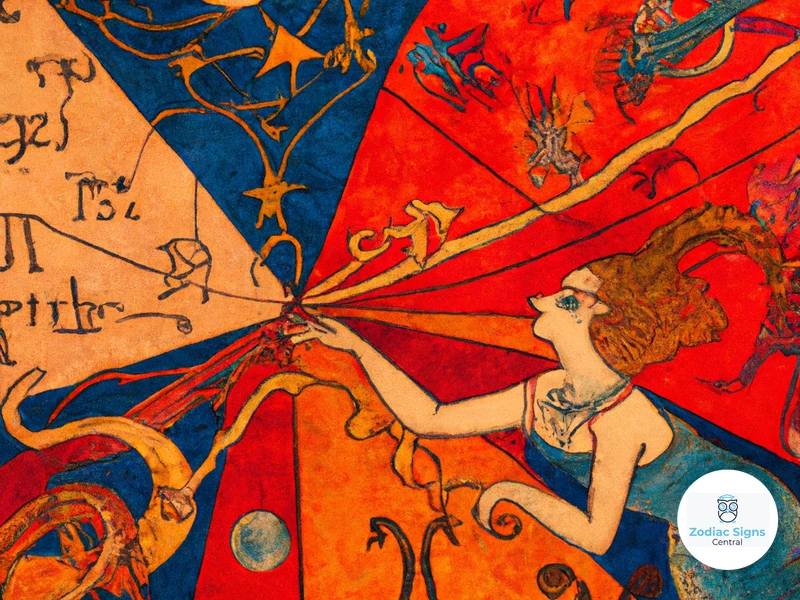
Hellenistic astrology, which emerged during the Hellenistic period in ancient Greece, played a pivotal role in further developing the symbolism associated with astrology. During this time, there was a merging of Mesopotamian and Egyptian astrological elements, resulting in a synthesis of ideas and symbols. The Hellenistic astrologers saw the planets as representatives of different gods and goddesses, attributing various qualities and characteristics to each one. For example, the planet Venus was associated with Aphrodite, the Greek goddess of love and beauty, and thus symbolized romantic relationships and aesthetic pursuits. The Hellenistic astrologers also refined and expanded the symbols used to represent the planets, incorporating elements that conveyed their unique attributes. These symbols, such as the ♃ for Jupiter and the ♄ for Saturn, allowed for a compact and visually distinct way of representing the planetary forces in astrology. To this day, the Hellenistic symbolism continues to be utilized and recognized in modern astrology, connecting us to the rich heritage of the ancient world.
Merging of Mesopotamian and Egyptian Elements
In the realm of astrology, the merging of Mesopotamian and Egyptian elements played a crucial role in shaping the symbolism associated with the planets. During the Hellenistic period, which marked a significant crossroads of cultural exchange, the astrological traditions of these two ancient civilizations intertwined. The Mesopotamians’ knowledge of celestial bodies and their symbolism merged with the Egyptians’ deep connection to gods and goddesses. This fusion resulted in a rich tapestry of planetary symbols that incorporated elements from both cultures. For example, the symbol for Jupiter, the king of the gods in Roman mythology, derived from the Mesopotamian symbol for Marduk, the chief deity of Babylon. Similarly, the symbol for Venus, the goddess of love and beauty, drew inspiration from the Egyptian hieroglyph for Hathor, the goddess associated with love, beauty, and music. The amalgamation of Mesopotamian and Egyptian elements brought a nuanced and multifaceted dimension to the planetary symbols, infusing them with layers of mythological and cultural significance.
Planetary Symbols in Hellenistic Astrology
In Hellenistic astrology, which emerged during the Hellenistic period in ancient Greece and Egypt, the symbols associated with planets underwent further development and refinement. During this time, the knowledge from Mesopotamian and Egyptian astrology fused together, resulting in a unique astrological system that played a significant role in shaping Western astrology. The Hellenistic astrologers assigned distinct symbols to each planet, further expanding on the Mesopotamian foundation. For example, the symbol for Jupiter resembled the letter ‘Z’ with a horizontal line through it, representing the lightning bolt associated with the god Zeus, whom Jupiter was identified with in Roman mythology. The symbol for Mars consisted of a circle with an arrow pointing upwards, depicting the spear of the god Mars, representing aggression and action. These symbols allowed astrologers to visually represent the planets in written texts and charts. The symbols used in Hellenistic astrology laid the groundwork for the planetary symbols still used today. + The merging of Mesopotamian and Egyptian elements in Hellenistic astrology gave rise to a comprehensive and intricate system that continues to influence astrological practices and interpretations.
Medieval and Renaissance Astrology
During the Medieval and Renaissance periods, astrology underwent significant transformations influenced by societal changes and emerging religious beliefs. Christianity played a crucial role in shaping the practice of astrology during this time, often imposing restrictions and scrutiny. Astrologers faced challenges as they had to reconcile their astrological beliefs with Christian doctrines. Despite these obstacles, astrology continued to flourish, with many scholars and practitioners incorporating alchemical influences into their work. Alchemical symbols, such as the seven classical planetary metals, became intertwined with astrological symbols, adding layers of meaning and depth. The symbolism in astrology became more complex and esoteric, reflecting the intellectual and philosophical pursuits of the time. Astrologers further developed the interpretation of planetary symbols, drawing connections between their celestial influences and human personality traits, behaviors, and destinies. As astrology progressed through the Medieval and Renaissance periods, its rich symbolism evolved and adapted to the changing cultural and religious landscape, paving the way for its continued relevance in contemporary times.
Effects of Christianity
During the medieval and Renaissance periods, the rise of Christianity brought about significant changes and influences on astrology and its symbols. The Church regarded astrology with suspicion, considering it a form of divination, which was forbidden. As a result, astrologers faced persecution, and many had to practice their craft secretly. This led to a decline in the development and widespread use of astrological symbols during this time. However, astrology continued to persist, albeit in a modified form. Christian symbolism began to merge with astrological imagery, resulting in the creation of new symbols that reflected both religious and astrological beliefs. For instance, the symbol of the planet Saturn (♄) began to be associated with the scythe, symbolizing the harvest of souls in Christian ideology. Similarly, the symbol for Jupiter (♃) came to represent a staff, reminiscent of the Christian depiction of St. Peter. These adaptations allowed astrology to survive in the face of religious opposition, although it underwent significant transformations in the process. The effects of Christianity on astrological symbols were a testament to the power of religious influence and the adaptability of astrology itself.
Alchemical Influences on Symbolism
During the medieval and Renaissance periods, astrology experienced a profound influence from alchemy, sparking a transformation in the symbolism associated with planetary representations. Alchemy, a mystical tradition that sought to transmute base metals into gold, became intertwined with astrology as practitioners believed that the planets held significant influence over the processes of transformation and purification. This fusion led to the emergence of new symbols that combined astrological and alchemical elements. For example, the symbol for Venus, traditionally associated with love and beauty, took on new meanings in alchemical astrology, representing the metal copper and the concept of femininity. Similarly, the symbol for Mercury, associated with communication and intellect, came to embody both the planet and the metal it was associated with – mercury. These alchemical influences on symbolism added layers of interpretation and depth to astrological charts and readings, highlighting the interconnectedness and transformative potential of the celestial forces at play. + Over time, as the field of alchemy evolved, so too did the symbolism associated with the planets, enriching the practice of astrology with additional layers of meaning.
Modern Astrology and Contemporary Significance
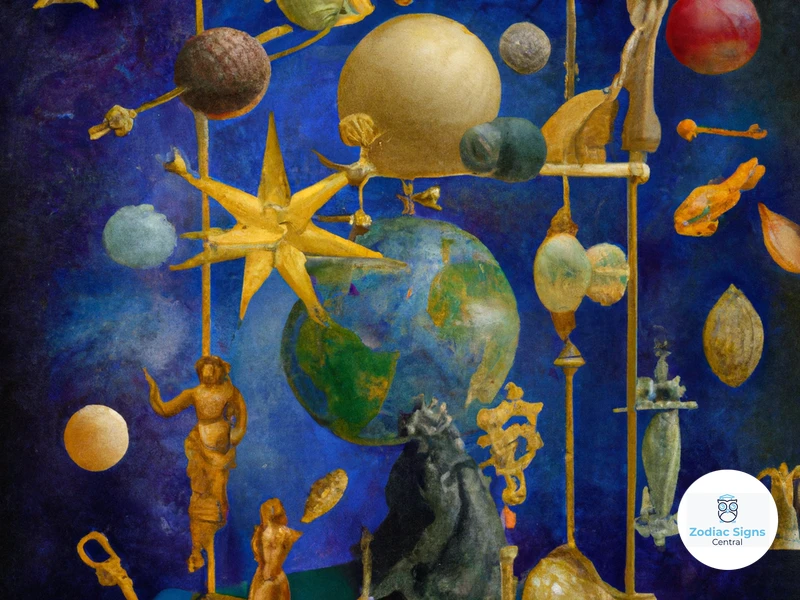
Modern astrology has evolved significantly from its ancient origins, yet the significance of planetary symbols remains a vital part of its practice. In contemporary astrology, the planetary symbols continue to hold meaning and serve as a visual representation of the celestial bodies they represent. These symbols have become ingrained in popular culture and are widely recognized by astrologers and astrology enthusiasts. Each symbol carries its own unique attributes and associations, contributing to the interpretation of an individual’s birth chart or horoscope. Astrologers use these symbols to analyze personality traits, compatibility between individuals, and the influence of planetary movements on daily life. For example, the symbol for the sign of Aries, represented by the ram, signifies qualities such as adventure, assertiveness, and leadership, influencing the compatibility with other zodiac signs. The modern interpretation of these symbols continues to shape our understanding of astrology and guide individuals in their quest for self-discovery and personal growth.
Evolution of Planetary Symbols
The evolution of planetary symbols in astrology has been a gradual process, influenced by various cultures and historical periods. Over time, these symbols have undergone modifications and adaptations, reflecting the changing beliefs and interpretations associated with each planet. In ancient Egypt, for example, the symbol for Venus was shaped like a star, representing its association with the goddess of love and beauty. In Hellenistic astrology, the symbols became more abstract and stylized, with Venus represented by a circle atop a cross, symbolizing harmony and balance. During the medieval and Renaissance periods, planetary symbols were influenced by alchemical traditions and the rise of Christianity. Planets like Saturn and Jupiter were associated with specific metals and given corresponding symbols, such as a scythe for Saturn and a thunderbolt for Jupiter. As astrology evolved into the modern era, some symbols underwent simplification and standardization to facilitate ease of use and understanding. Despite these changes, the core concepts and meanings behind the symbols have remained relatively consistent, allowing astrologers to interpret their significance in contemporary astrology.
Interpretation and Meaning Today
In modern astrology, the interpretation and meaning of planetary symbols continue to hold significance and provide valuable insights into personality traits, life experiences, and potential outcomes. Each planetary symbol represents a specific energy or archetype that influences different aspects of an individual’s life. For example, the Sun symbolizes vitality, self-expression, and individuality, while the Moon represents emotions, nurturing qualities, and intuition. + By understanding the symbolism behind these planetary symbols, astrologers and enthusiasts can gain a deeper understanding of their own personalities and interpersonal dynamics. The interpretation of these symbols takes into account their placement in a birth chart, their aspects to other planets, and the specific sign they are in. This comprehensive approach allows for a more nuanced interpretation that considers the interplay between different astrological factors in a person’s life. The interpretation of planetary symbols has also expanded beyond personal astrology to explore collective trends, societal shifts, and global events. Astrologers analyze the movement and interactions of planetary symbols to provide insights into broader themes and energies that impact humanity as a whole. As astrology continues to evolve and adapt to the modern world, the interpretation of planetary symbols remains an important tool for understanding ourselves and the world around us. Whether it’s exploring the professional path of Capricorn individuals, examining Aries compatibility with other zodiac signs, or understanding the influence of the Moon in Cancer signs, the interpretation of planetary symbols offers a wealth of knowledge and insight for contemporary astrology enthusiasts.
Conclusion
In conclusion, the origins of planetary symbols in astrology can be traced back to the ancient civilizations of Mesopotamia, Egypt, and Greece. These civilizations had a profound influence on the development and evolution of astrological symbols, shaping the way we interpret and understand celestial energies. The Mesopotamians, with their cuneiform script and symbolic representations of celestial bodies, laid the groundwork for the symbols that are still recognized today. The Egyptians infused their cosmology and deities into the symbolism, adding layers of meaning and connection to the celestial forces. The Hellenistic period saw a merging of Mesopotamian and Egyptian elements, further refining and expanding the repertoire of planetary symbols. The medieval and Renaissance periods brought new influences, such as the impact of Christianity and the incorporation of alchemical symbolism. These influences, combined with ongoing interpretation and evolution, have led to the contemporary significance of planetary symbols in modern astrology. Today, we continue to explore and interpret the rich symbolism of the planets, seeking insight into ourselves and our place within the cosmos. The origins of these symbols remind us of the timeless connection between the celestial and the earthly, and the enduring power of astrology as a tool for self-reflection and understanding.
Frequently Asked Questions
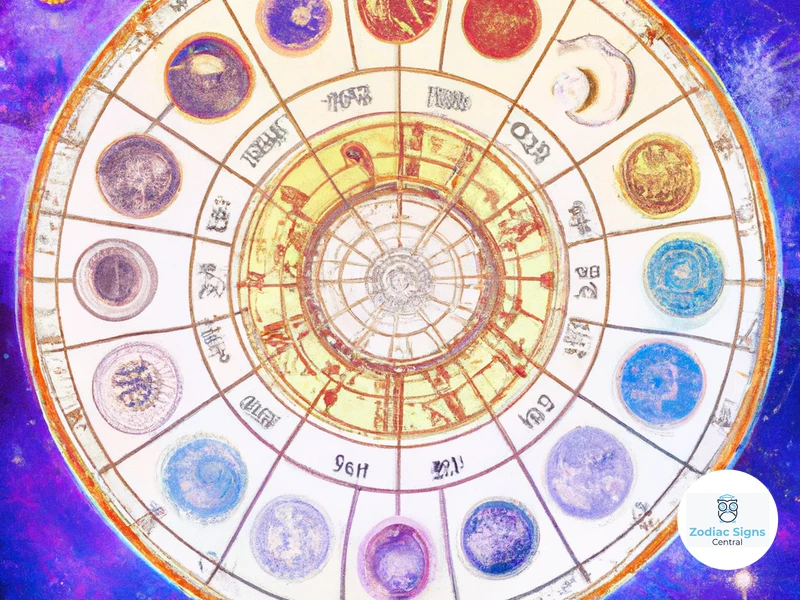
What is the significance of Mesopotamian astrology in the development of planetary symbols?
The Mesopotamians played a crucial role in the development of astrological symbols. They believed that celestial bodies influenced human affairs, and their observations and interpretations laid the foundation for assigning symbols to represent planets.
Did the physical characteristics of the celestial bodies influence the choice of symbols in Mesopotamian astrology?
Yes, the physical characteristics of the celestial bodies, such as the crescent shape of the Moon and the circular design with a dot in the center for the Sun, influenced the choice of symbols in Mesopotamian astrology.
How did the Mesopotamians record their astronomical observations?
The Mesopotamians used cuneiform script, a system of wedge-shaped characters, to record their astronomical observations and interpretations. This allowed them to preserve and pass down their astrological knowledge.
Were the Mesopotamian symbols for planets still used in later astrological practices?
While the specific symbols used by the Mesopotamians may have evolved over time, their early symbols laid the foundation for the planetary symbols used in later astrological practices.
Were the Mesopotamians the first civilization to assign symbols to represent celestial bodies?
No, the Mesopotamians were not the first civilization to assign symbols to celestial bodies. However, their contributions were significant and influenced later cultures and astrological practices.
Did later civilizations build upon the work of the Mesopotamians in astrology?
Absolutely, later civilizations, such as the Egyptians and Greeks, built upon the knowledge and practices of the Mesopotamians in the field of astrology.
How did Mesopotamian astrology differ from astrology in other ancient civilizations?
Mesopotamian astrology differed from astrology in other ancient civilizations in terms of the specific symbols used and the interpretations attached to celestial bodies. Each civilization developed its own unique astrological traditions.
What role did Mesopotamian astrology play in society?
Mesopotamian astrology played a significant role in society. It was believed that understanding the movements and positions of celestial bodies could provide guidance and insight into various aspects of life, including agriculture, politics, and personal destinies.
Did Mesopotamian astrological symbols have a spiritual or religious significance?
Yes, Mesopotamian astrological symbols were often associated with spiritual and religious beliefs. The celestial bodies were seen as gods or divine entities, and their symbols held deep spiritual significance.
Do modern astrologers still use symbols derived from Mesopotamian astrology?
Yes, many of the symbols used in modern astrology, such as ☽ for the Moon and ☉ for the Sun, trace their origins back to the Mesopotamians. These symbols have stood the test of time and are still widely recognized and used by astrologers today.
References
Frequently Asked Questions

Why do planets have unique symbols in astrology?
Planetary symbols in astrology represent the different celestial bodies and their specific energies and characteristics. These symbols help astrologers identify and interpret the various planetary influences in a birth chart.
Where did the origins of planetary symbols in astrology come from?
The origins of planetary symbols in astrology can be traced back to ancient civilizations, such as Mesopotamia, Egypt, and Greece. These cultures developed their own astrological systems and symbols to represent the planets.
What is the significance of the ancient Mesopotamian influence on planetary symbols?
The ancient Mesopotamians were among the first to develop a systematic approach to astrology. Their influence on planetary symbols laid the foundation for the astrological traditions that followed, including the use of planetary glyphs and symbols.
How did the symbology of the Sun and Moon develop in astrology?
In astrology, the Sun is represented by a circle with a dot in the center, symbolizing vitality and consciousness. The Moon is represented by a crescent shape, symbolizing emotions and intuition. These symbols evolved over time to reflect the perceived attributes of these celestial bodies.
What is the connection between Egyptian cosmology and astrology?
Ancient Egyptians believed that the movements of the planets and stars were connected to the gods and goddesses, who played a significant role in their cosmology. Astrology in Egypt was intertwined with religious beliefs, which influenced the development of planetary symbols.
How did Egyptian cosmology influence the symbols of the planets?
The gods and goddesses of ancient Egypt were associated with specific celestial bodies, and this association influenced the development of planetary symbols. For example, the symbol for Jupiter in astrology resembles the Egyptian god Amun’s headdress, highlighting their connection.
What role did Hellenistic astrology play in the evolution of planetary symbols?
Hellenistic astrology, which emerged during the Hellenistic period in ancient Greece, blended elements from Mesopotamian and Egyptian astrology. This fusion of traditions contributed to the development of new planetary symbols and their interpretations.
How did the merging of Mesopotamian and Egyptian elements influence planetary symbols in Hellenistic astrology?
Hellenistic astrology incorporated Mesopotamian and Egyptian concepts of planetary symbolism, resulting in the adoption of certain symbols for the planets. For example, the symbol for Saturn in Hellenistic astrology resembles the Egyptian god Set’s symbol.
What are the effects of Christianity on planetary symbols in medieval and Renaissance astrology?
With the rise of Christianity, some astrological symbols came to be associated with pagan beliefs and were rejected. As a result, new symbols were introduced for the planets, which were less connected to pagan deities but still conveyed their astrological meanings.
How has the meaning and interpretation of planetary symbols evolved in modern astrology?
In modern astrology, the meaning and interpretation of planetary symbols have become more abstract and psychological. Astrologers now focus on the archetypal energy and psychological characteristics associated with each planet, rather than a direct representation of the deities or celestial bodies.
References
- Written in the Stars: Astronomy and Astrology in Medieval …
- Amazon.com: Planetary Symbolism in the Horoscope
- Solar System Symbols

